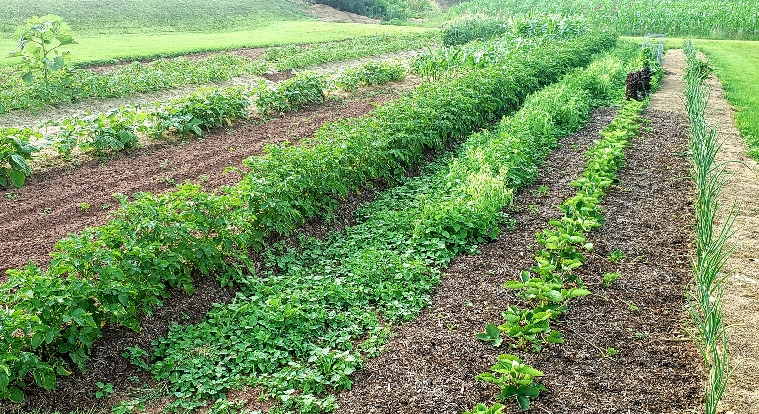16% OM is attainable in a garden, there are naturally occurring soils with a higher OM than this, but in a lot of large production fields with sandy soils that level may not be attainable, and definitely would come at a high short term cost. However, I think that increasing OM at attainable levels is the wave of the future of sustainable farming, and will eventually be promoted by NRCS through paid programs to increase OM. (Note: straight manure is not good in unreasonable quantities, compost should be the main option considered. Also, there is something like OM with added fertilizer levels being too high, promoting excessive nutrient runoff, however, this is not a common occurrence as most compost users don't use any chemical fertilizer, and compost done properly alleviates runoff)
You mention OM giving plants to much N and P, OM does exactly the opposite, it locks up nutrients and disperses them slowly, which pays off on the long term because it will all eventually be released, but OM brings a temptation to do tillage and reap the benefits right away. A good analogy making the comparisons of the soil microbe activity in a low OM, fertilized tillage example, compared to soil microbe activity in a no-till, high OM example would be similar to feeding teenagers a diet of soda and candy with periods of starvation in between, compared to feeding them a steady healthy balanced diet of the five food groups.
OM is a great fertilizer reserve, actually the only plant food reserve the soil has, storing plant energy like an agriculture battery, as 1% of soil organic matter holds 1,000 lb of nitrogen, plus P and K. OM also stores huge amounts of carbon (ESA quote: soils contain approximately 75% of the carbon pool on land — three times more than the amount stored in living plants and animals) The catch to stored carbon is this temptation that I already mentioned, for farmers to do tillage, introducing oxygen which releases the stored fertilizer values, making the current crop achieve higher yields, but at a huge long-term cost that's not readily noticeable.
So to bring my rambling point to a close; these are the reasons why all conversations about "Regenerative Farming" usually start and end with organic matter, and why I believe we are currently only seeing the beginning stages of this being pushed by the powers that be. And this is my train of thought when I mention 4.6% OM being less than average in a garden.


